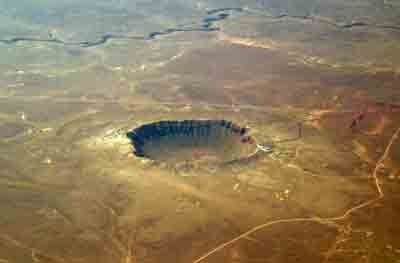Rare fragment of meteoric origin 9.3 gr - mm 34 x 33 x 5 Meteorites Raw Minerals Stones Rocks for Collection, nice thin section of Impactite consolidated melt Rock Grey Breccia or Suevite, gas vesicles rich, in plexiglas box diam. cm 3, only a piece, as in photos.
Fall period: Upper Triassic (207 million years).
Included to the Meteorite a geological tab dates paper.
The Rochechouart crater is an impact crater tentatively centered at the hamlet of La Judie 4 km (2.5 mi) west of Rochechouart, France. Its original diameter before erosion is thought to have been about 20–30 km (12–19 mi). Its most recent age estimate is 206.9 million years ago, placing it in the Rhaetian (Upper Trias), five million years older than the Triassic-Jurassic boundary. Since then the crater has been deeply eroded, and no trace of its original surface morphology is visible. The crater appears to be too small to account for the Triassic–Jurassic extinction event.
The remnants of this astrobleme have been a major subject of debate among geologists since their discovery in the early 19th century. The explanation was only given in 1969 by the French geologist François Kraut, who proved the impact origin of the breccias. The Rochechouart impact crater was the first crater whose nature was proved by the impact effects on the rocks, without any circular topographic features being visible. Research from 2017 shows that this crater is a few million years older than the Triassic-Jurassic boundary.
Impactite resulting from this event, quarried north-west of Rochechouart near Chassenon, was the stone principally used in the building of the monumental Roman baths of Cassinomagus.
Geophysicist David Rowley of the University of Chicago, working with John Spray of the University of New Brunswick and Simon Kelley of the Open University, suggested that Rochechouart may have been part of a hypothetical multiple impact event which also formed the Manicouagan crater in northern Quebec, Saint Martin crater in Manitoba, Obolon' crater in Ukraine, and Red Wing crater in North Dakota. All of the craters had previously been known and studied, but their paleoalignment had never before been demonstrated. Rowley has said that the chance that these craters could be aligned like this due to chance are nearly zero.
Impactites consist of pre-existing terrestrial rocks altered and / or merged partially or totally by the very high temperatures and pressures, instantaneous and of very short duration, generated by the impact of a large meteorite, asteroids and comets on the Earth's surface: "targeted" rocks may be of different types, as are the generated impacts. As a result of an impact, new types of rocks (such as suevite and kofelsite) can be created, as well as new minerals, different from the original rocks and minerals because part or all of the included elements have been expelled or destroyed by high temperatures, such as water, crystals or any fossils.
Unfused impacts may contain wedge fractures (shatter cones), varying in size from a few centimeters to over 2 meters.
The minerals that are formed, at least on Earth, only as a result of the impacts of asteroids or comets are: the chaoite, the coexite, the lechatelierite, the maskelynite, the reidite and the stishovite.

The lechatelierite can resemble the trinitite, a molten rock that forms on the subepicentral point of the explosion of atomic bombs.
Meteor impacts can also create glass-like impacts. Normally these glasses take their name from the area in which they are found, such as for example. the glass of Darwin, the glass of the Libyan desert, the irgizites.
Sometimes the asteroid / cometary impacts hurl terrestrial rocks completely fused at a great distance, during their ballistic flight, partly even outside the Earth's atmosphere; these fragments, cooling down, pass through a plastic condition, which shapes the fragments according to the most different aerodynamic shapes.
According to many researchers, the so-called tectites, found in different places on the Earth's surface, form part of these fragments.
Breccia is a rock composed of broken fragments of minerals or rock cemented together by a fine-grained matrix that can be similar to or different from the composition of the fragments. The word has its origins in the Italian language, in which it means either "loose gravel" or "stone made by cemented gravel". A breccia may have a variety of different origins, including sedimentary breccia, tectonic breccia, igneous breccia, impact breccia, and hydrothermal breccia.
Impact breccias are thought to be diagnostic of an impact event such as an asteroid or comet striking the Earth and are normally found at impact craters. Impact breccia, a type of impactite, forms during the process of impact cratering when large meteorites or comets impact with the Earth or other rocky planets or asteroids. Breccia of this type may be present on or beneath the floor of the crater, in the rim, or in the ejecta expelled beyond the crater.
Impact breccia may be identified by its occurrence in or around a known impact crater, and/or an association with other products of impact cratering such as shatter cones, impact glass, shocked minerals, and chemical and isotopic evidence of contamination with extraterrestrial material (e.g. iridium and osmium anomalies).



